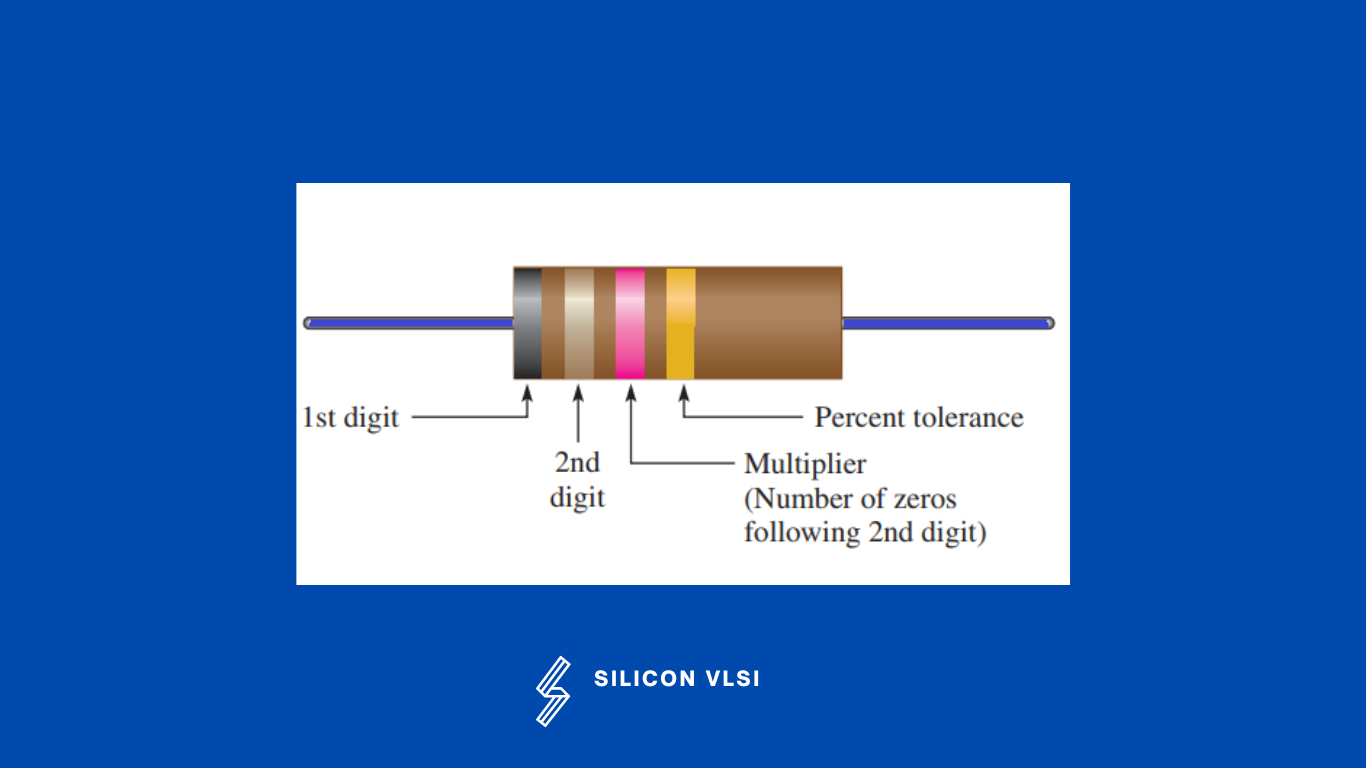Understand resistor color coding and its application in electronics
The resistor color code calculator makes it easy to identify and select resistance and tolerance. Some types of fixed resistors with value tolerances of 5% or 10% are color coded with four bands to indicate the resistance value and the tolerance of the resistor. This color-code band system is shown in the following figure

The color code is listed in the following Table. The bands are always located closer to one end.

4 Band Resistor Color Code
Start with the band that is near the resistor’s one end. The first band is the first digit of the resistance value. If it is not clear which is the banded end, start from the end that does not begin with a gold or silver band. #
The second band is the second digit of the resistance value.
The multiplier, or the amount of zeros after the second digit, is the third band.
The fourth band, which is typically made of gold or silver, shows the percent tolerance. The tolerance is 20% if the fourth band is absent.
For example, a 5% tolerance means that the actual resistance value is within plus/minus 5% of the color-coded value. Thus, a 100 resistor with a tolerance of plus/minus 5% can have an acceptable range of values from a minimum of 95 ohms to a maximum of 105 ohms. As indicated in the table, for resistance values less than 10, the third band is either gold or silver. Gold in the third band represents a multiplier of 0.1, and silver represents 0.01. For example, a color code of red, violet, gold, and silver represents 2.7 with a tolerance of plus/minus 10%.
Example for 4-band Resistor color code
Find the resistance values in ohms and the percent tolerance for each of the color-coded resistors are shown in the following Figures
A:
![]()
Solution:
The first band is brown = 1, the second band is black = 0, the third band is brown = 1 zero, and the fourth band is silver = ±10% tolerance.
R = 100Ω ±10%
B:
![]()
Solution:
The first band is green = 5, the second band is blue = 6, the third band is green = 5 zeros, and the fourth band is gold = ±5% tolerance.
R = 5600,000Ω ±5%
5 Band Resistor Color Code
Certain precision resistors with tolerances of 2%, 1%, or less are generally color coded with five bands, as shown in the following figure. Begin at the band closest to one end. The first band is the first digit of the resistance value, the second band is the second digit, the third band is the third digit, the fourth band is the multiplier, and the fifth band indicates tolerance. #
![]()
Example for 5-band Resistor color code
A:
![]()
Solution:
The first band is orange = 3, the second band is orange =3, the third band is red = 2, fourth the band is orange = 3, and the fifth band is green ±5% tolerance.
R = 332,000Ω ±0.5%
B:
![]()
Solution:
The first band is red = 2, the second band is violet =7, the third band is black =0, fourth the band is gold = Χ0.1, and the fifth band is red ±2% tolerance.
R= 270 * 0.1 = 27 Ω ±2%